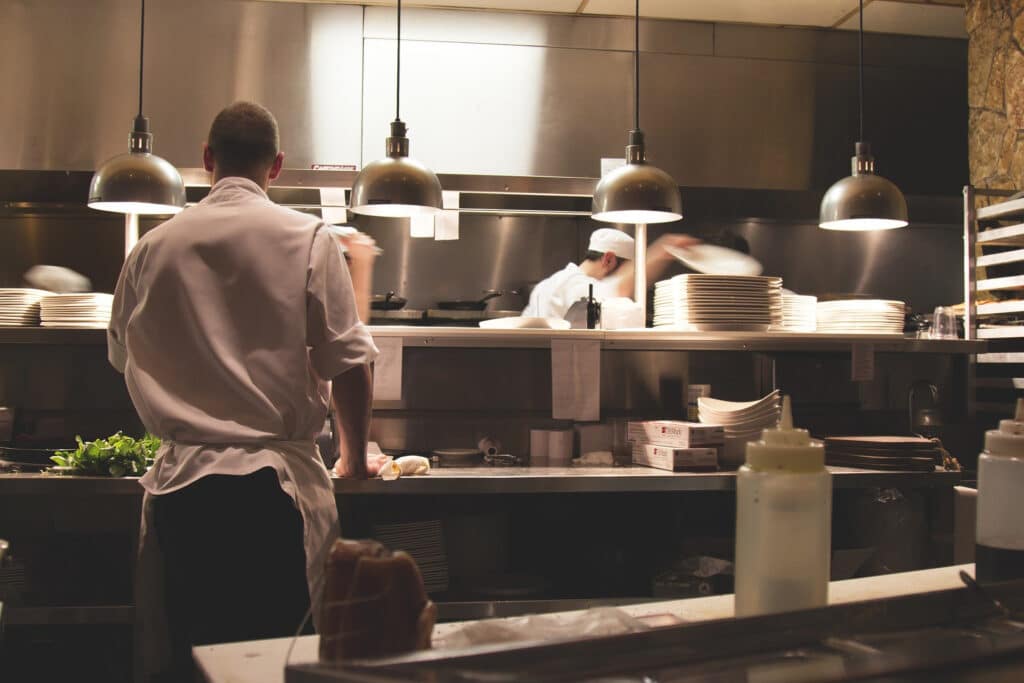
Ghost kitchens are taking over the commercial scene as they’re proving to be a strong tenant for CRE’s restaurant arena.
By combining the best of communication technology and responding to contemporary consumer demands for remote access to goods, ghost kitchens may be the new favorite restaurant tenant for commercial real estate.
If you’re not up to speed with the ghost kitchen trend and how it’s set to impact the commercial industry, here’s everything you need to know:
What Are Ghost Kitchens?
The newest food service module is making quite an entrance into the restaurant scene. Ghost kitchens are basically food preparation spaces solely focused on deliveries, meaning they’re a staff-only zone without dining rooms or on-site eating areas.
Following the dining trend of food halls and pop-up restaurants, ghost kitchens are responding to a growing demographic of consumers that are looking for gourmet goods delivered straight to their doors.
Ghost kitchens are the closest thing that the real-time meal service industry has to a fully online platform. They build a brand culture with web resources, heavily invest in marketing, and social media to establish a community.
It’s a hassle-free, hands-off restaurant experience that provides immediacy and instant gratification – and we all know that today’s consumers love all things easy. While most restaurants require their customers to go out of their way to enjoy their meals, ghost kitchens don’t require any in-person interactions – and, after the COVID-19 pandemic, this social distancing-friendly protocol may be more valuable than ever.
Coupled with the seamless food delivery system that supports remote-eaters all over the country, ghost kitchens are in a highly advantageous position.
Malls Love This Flexible New Tenant
While expert analysts don’t expect ghost kitchens to be the sole savior of malls, they are anticipating to see this delivery-only food service to be a loyal tenant for brick-and-mortar. Ghost kitchens are more flexible than other restaurants, making them a perfect tenant for struggling mall locations across the country.
Ghost kitchens are a perfect option to fill some of the less-popular leasing units that make up long-time vacancies malls may be sitting on. Ghost kitchens don’t need a large, window-front leasing space to appeal to customers – they only need to make great food and deliver it with ease.
Impacts on Commercial Real Estate
So what does this new restaurant-type have to offer to commercial real estate?First of all, ghost kitchens are set to reinvigorate the mall scene by filling long-vacant units that wouldn’t really work for tenants that require lots of foot traffic to keep business booming. This is helping generate greater ROI for malls as they harness the fullness of their leasing yield capacity.
Ghost kitchens also provide a new avenue for CRE’s restaurant tenants to explore as they’re experimenting with business types. Not everyone fits into the same box, and sometimes a little freedom can go a long way by fueling commercial real estate with deals.
Expect to see physical spaces change to accommodate ghost kitchens. But, the best part is that transitioning between tenants shouldn’t require too many renovations since the basic kitchen equipment will already be in place. This is far easier than switching between restaurant tenants, where entire dining areas need to be redesigned to fit the new brand.
Ghost kitchens are hitting the restaurant scene and should be on the radar of all CRE pros working with retail and dining.